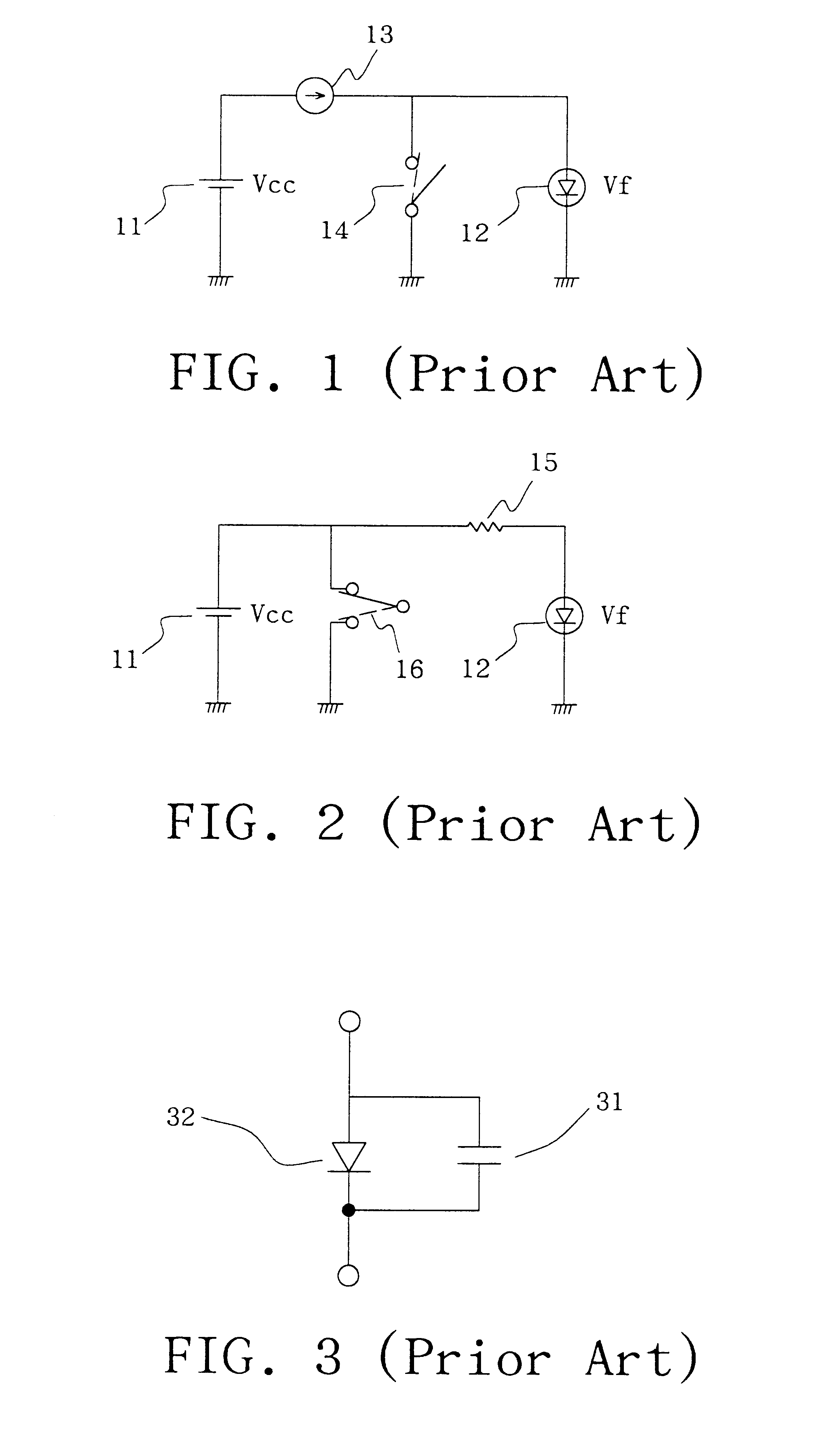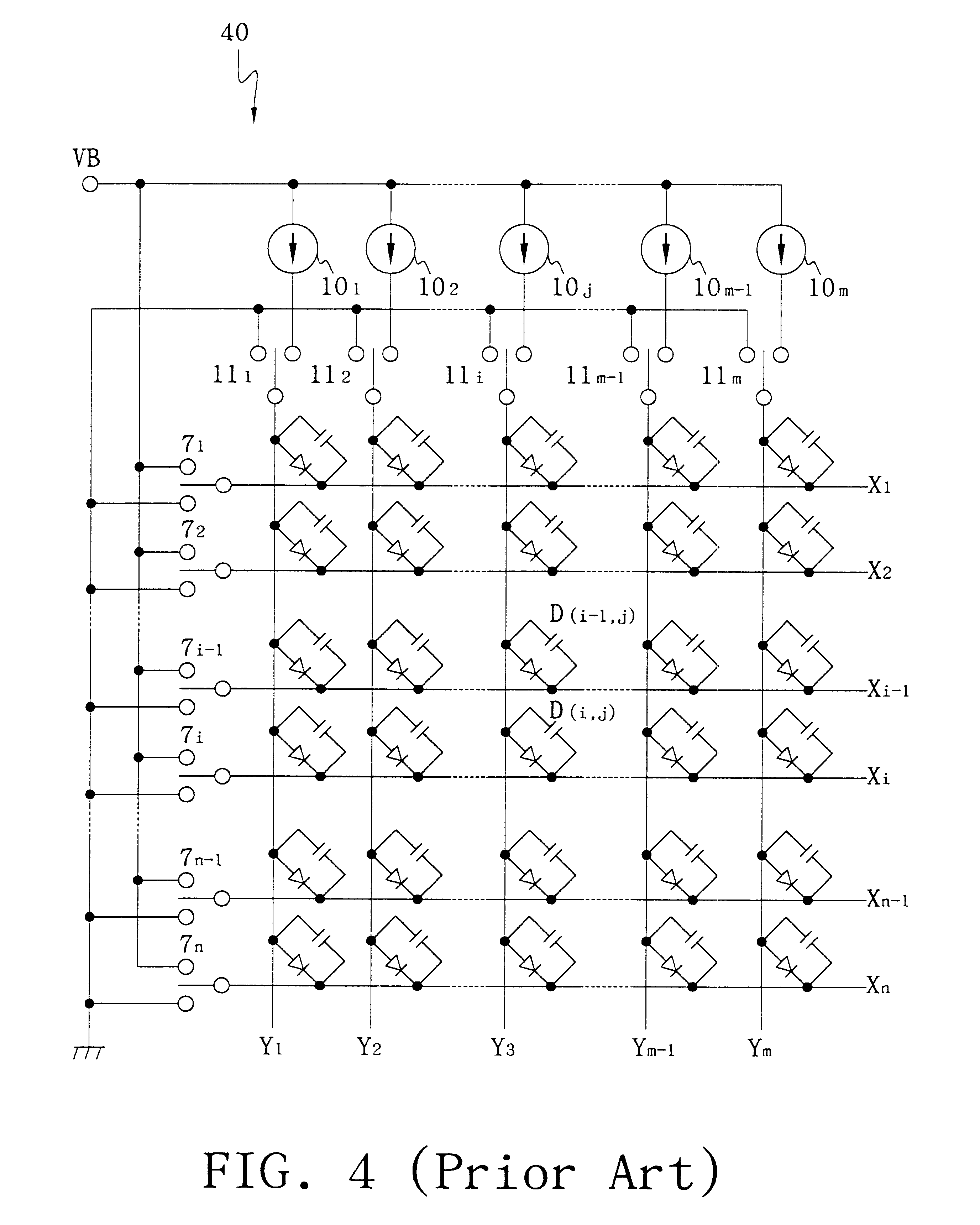Circuit and system for driving organic thin-film EL elements
- Summary
- Abstract
- Description
- Claims
- Application Information
AI Technical Summary
Benefits of technology
Problems solved by technology
Method used
Image
Examples
Embodiment Construction
FIG. 7 shows a driving circuit 70 for an organic thin-film EL element according to a first embodiment of the present invention. In this driving circuit 70, an organic thin-film EL element 71 is connected between an anode-scanning switch 72 and a constant current source 73, and the current output from the constant current source 73 flows to a cathode data-driving switch 74. Both the anode-scanning switch 72 and cathode data-driving switch 74 are switches which are switched between a power potential and a ground potential. The anode-scanning switch 72 and the cathode data-driving switch 74 are used to control the emission of the organic thin-film EL element 71. The anode-scanning switch 72 is connected to a power potential while the organic thin-film EL element 71 is scanned and connected to a ground potential otherwise; the cathode data-driving switch 74 is connected to a ground potential while the organic thin-film EL element 71 is selected and connected to a power potential otherwi...
PUM
 Login to View More
Login to View More Abstract
Description
Claims
Application Information
 Login to View More
Login to View More - R&D
- Intellectual Property
- Life Sciences
- Materials
- Tech Scout
- Unparalleled Data Quality
- Higher Quality Content
- 60% Fewer Hallucinations
Browse by: Latest US Patents, China's latest patents, Technical Efficacy Thesaurus, Application Domain, Technology Topic, Popular Technical Reports.
© 2025 PatSnap. All rights reserved.Legal|Privacy policy|Modern Slavery Act Transparency Statement|Sitemap|About US| Contact US: help@patsnap.com



